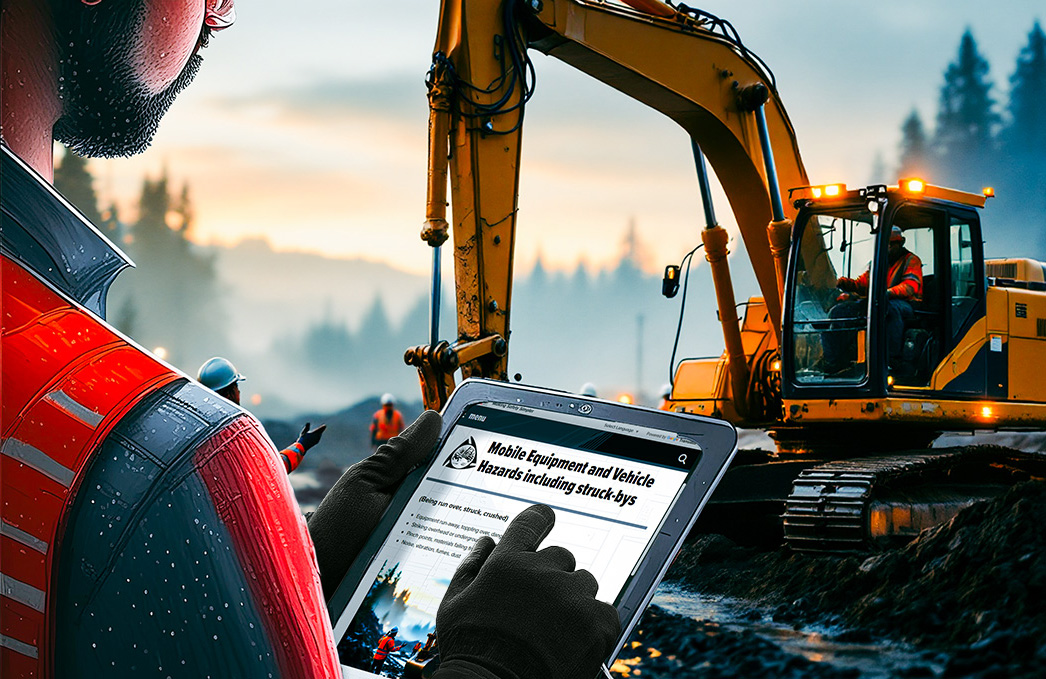Practice Scenario

Managing Safety Risks in a Construction Site
Imagine you are the construction manager at a construction site where a new commercial building is being erected. You've been tasked with ensuring the safety of all workers on site.
Let's walk through the three-step process of Identifying Hazards, Assessing Risks, and Controlling Risks to manage safety effectively.
STEP 1: Identifying Hazards
Workplace Inspection
You start by walking around the construction site and observing how tasks are performed. You notice the following:
- Workers are using ladders to reach high places.
- Heavy machinery like forklifts is in operation.
- Chemicals are being used for cleaning and other tasks.
Consult Workers
You talk to some workers to understand if they have encountered any issues or have safety concerns. One worker mentioned:
- The area near the chemical storage is slippery.
Review Records
You check past incident reports and find:
- There have been two near-miss incidents involving forklifts in the last month.
STEP 2: Assessing Risk
Who Might Be Harmed and How
Fall from heights
Workers may fall while using ladders
Forklift accidents
Pedestrians might be struck by forklifts
Slippery floors
Workers may slip while walking near the chemical storage area
Chemical exposure
Cleaning staff may be exposed to harmful chemicals.
Assess Level of Risk
Using a risk matrix, you rate the risks as follows:
Fall from heights: High Risk
Forklift accidents: Moderate Risk
Slippery floors: Moderate Risk
Chemical exposure: Low Risk
3x3 Risk Matrix (Recommended for most workplaces)
| Hazards are assessed for risk by considering the SEVERITY & PROBABILITY of the hazard causing injury or damage. | SEVERITY | |||
|---|---|---|---|---|
| 3 - LOW CONCERN/STRESS |
2 - MODERATE MEDICAL AID |
1 - HIGH FATALITY/CRITICAL ILLNESS |
||
| PROBABILITY | C - UNLIKELY (Unlikely to occur) |
LOW | LOW | MODERATE |
| B - LIKELY (Likely to happen) |
LOW | MODERATE | HIGH | |
| A - CERTAIN (Almost certain) |
MODERATE | HIGH | HIGH | |
STEP 3: Implementing Risk Controls
High Risk
Fall from heights
Elimination or Substitution
Replace ladders with scissor lifts to eliminate the risk of falls.
Engineering Controls
Install guardrails around elevated platforms.
Personal Protective Equipment (PPE)
Require the use of safety harnesses when working at heights.
Moderate Risk
Forklift accidents
Administrative Controls
Implement a traffic management plan to separate forklifts and pedestrians.
Moderate Risk
Slippery floors
Engineering Controls
Use spill containment platforms in the chemical storage area to prevent slips.
Administrative Controls
Limit access to the chemical storage area to trained personnel only.
Low Risk
Chemical exposure
Personal Protective Equipment (PPE)
Mandate the use of chemical-resistant gloves for cleaning staff.
Monitoring Control Measures
Conduct weekly safety inspections to ensure all control measures are effective. Review and update risk assessments monthly or when new equipment or processes are introduced.
